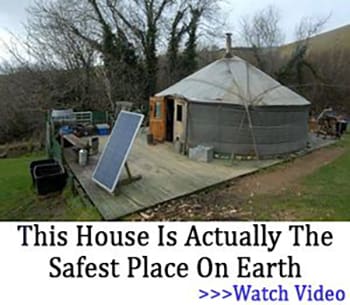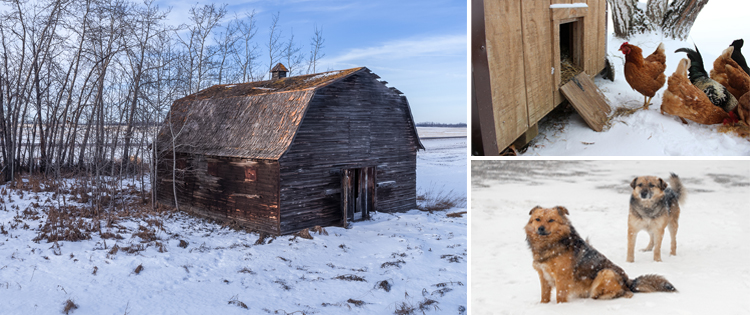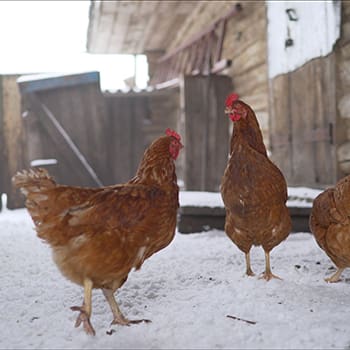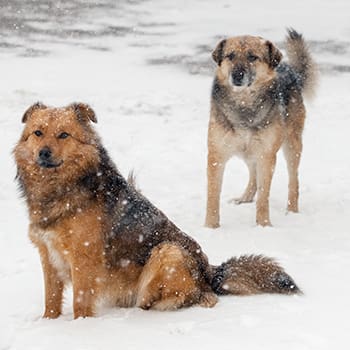Ah, winter. Snow, games, and holidays have lights twinkling in many windows across the world. The vast majority of us have some memory of nostalgia that goes along with the season or some favorite recipe that they look forward to making every year when the world starts to get frosty.
However, it’s not always quite so fun for our livestock. The polar opposites of summer and winter are hard on many of them, often making it difficult to get comfortable or protect their young. Here, we’ll look at what to do during different temperatures and for various species. All temperatures will be in Fahrenheit, so please convert to Celsius if that’s what you use.
How You Should Take Care Of Your Livestock In 30 Degrees
Most hoofstock is comfortable in this weather. Though horses that have been recently exposed to 70+ degree weather may appreciate a blanket, you’re looking at very little change to your typical day-to-day care. Those days when temperatures dip below freezing, a stock tank heater may be worthwhile but the ice is likely thin enough at this point that animals can simply break through it.
If you are allowing your animals to drink from a pond or to have pond access (as with ducks and other waterfowl), now is the time to start keeping a watch for trapped animals. This is unlikely to happen at this point, but it is plausible.
Sensitive animals may appreciate a heat lamp, but please be careful with these. They burn down barns every year and are very, very hot to the touch. Hang them in places where they will not be bumped or removed by the animals they are helping.
How You Should Take Care Of Your Livestock In 20 Degrees
Now it’s starting to get chilly. If your weather is up and down, we certainly suggest blanketing horses that do not have good winter coats yet, sheep and goats with poor coats and making certain that poultry and other small animals (such as rabbits) have lots of warm places to snuggle down. Cavies should be moved inside for the winter at this point; they are tropical animals that are pretty sensitive to cold at this level.
If ice is getting thick in your area, remove access to ponds for animals likely to get stuck in the ice or those who may be injured by slipping on it. If your ground is hard frozen for the rest of the season (those in the north will likely be in this position), invest in plumbing parts for your outdoor watering areas before you need them. Nothing is worse than going out to water your horses and finding everything so iced over that you can’t do it.
No one likes to carry buckets and an ounce of prevention is worth a pound of rest. Wrap exposed pipes in heavy pipe insulation and make certain that animals don’t tear it apart. You’ll need it.
10s to 0
This is when things get dicey. Animals younger than a year should be brought into the barn if at all possible. These young animals stand a pretty good chance of getting into trouble in the dark when temperatures really crash. Stock your barn with straw, hay, and/or warm pine shavings. All of these will help your animals stay cozy warm even in a barn where you can see your breath.
Invest in a good pair of gloves that you can shovel with. Having to remove your gloves in the freezing weather to shovel manure (which will build up over time and must be removed) will leave you cross, cold, and cranky.
Older animals should also be looked after carefully in these temperatures. I strongly recommend bringing in anything that you can house comfortably. Extremely large herds and flocks should be able to snuggle up close enough outdoors to keep each other warm, but 0F is reaching pretty sensitive temperatures for most animals.
If you do not have a shelter for your animals, this is the time to consider an above-ground one. Shelterlogic tents (and ones like them) are easy to put up and require no in-ground installation. Simply keeping the wind off of your animals and providing a few inches of bedding may be enough for most species. Many goats, sheep, cattle, horses, and other hoofstock are often kept on pastures year round even in cold climates.
Poultry, however, will start to have problems in cold, windy pastures where they must hunt through snow and ice to find grain or insects. Ducks, geese, and most waterfowl will be the last ones to have freezing issues. Guineas, quail, and chickens will be some of the first.
Negative Temperatures
Stock tank heaters, heated water bottles, heated dog bowls, and such will be a necessity at this point. If you do not have the ability to work with these items due to a lack of electricity in the areas these items are placed in, you must find a good alternative. Some add salt to their tanks, but this will not stop freezing when things get really bad.
Instead, invest in concrete bunkers that have heating rods running off of solar power. These are expensive ways to get your livestock water, but they do work. For those who need heated water bottles, try using a probe heater in a waterer over the top of hutches or coops. This can allow you to run an extension cord into your house or across the property to give you the power you need in one spot instead of trying to figure out a way to hide a multiple-unit adapter outside in wet, wintery conditions.
As with the other temperatures, horses who need them should have blankets. Young and elderly animals should be in barns, as well as any sick ones or those who are not thriving. Heat lamps are good. Heated barn floors are great. If your horse is indoors, you don’t need to give them blankets unless your indoor area is just as cold as the outdoor one.
Dangerous Negative Temperatures and/or Blizzard Conditions
Prepare. In. Advanced. If the weather channel or news is calling for severe temperatures or weather, get out there and fix things before you “wait and see” if it is coming. At worst, you’re out some money for bedding that isn’t used. At best, your animals are comfortable and safe during rough weather.
These conditions will require extensive knowledge of your own property. Keep your animals warm, indoors as much as possible until the storm has passed, or make certain that they have appropriate shelter for their species. If their pen is very muddy or soaked, pour shavings or straw until they have somewhere dry to stand. You don’t want to have to pull your animals out of ice; and wet conditions turn to ice very quickly.
Beyond that, try to hook up a camera system in these indoor areas if at all possible. This gives you the ability to check on your animals without venturing outside during the storm.
You may also like:
My Day As A Homesteader During Winter
New Invention 12X More Efficient Than Solar Panels (Video)
Livestock Animals You Should Start Raising For The Upcoming Economic Crisis
7 Domestic Animals That Are Too Easy To Raise










